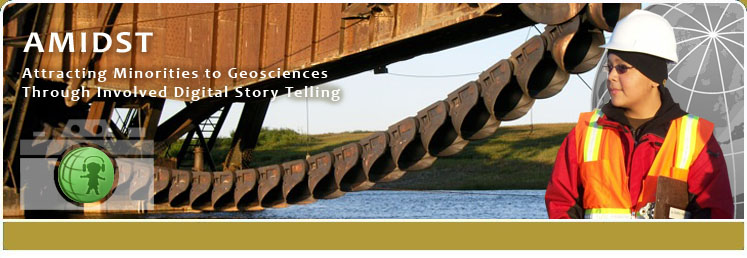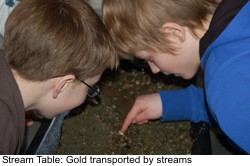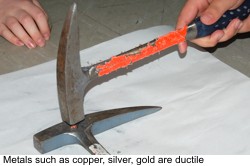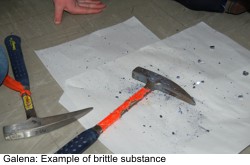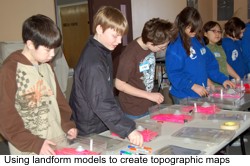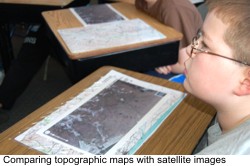Rainer Newberry and Anupma Prakash went to Nome in March 2009 to interact with the children in their schools, engage them in hands-on activities, and instill the key geoscience concepts about gold in Nome: its formation in the source rock, weathering, transportation, accumulation, exploration and mining. Some key concepts included:
Gold is deposited from very hot water containing compounds of gold. These compounds are gold combined with natural chemicals that allow the gold to dissolve. Most substances (including gold) are more soluble in higher temperature water and will precipitate (deposit) as the water cools.
There are two main types of gold deposits: lode and placer. When gold moves away from its original location through erosion and transport by wind, water, ice, or gravity, it can concentrate in another place to form a placer.
Gold concentrates in part because smashing gold grains (with rocks or a hammer) causes them to flatten, not break into tiny pieces. This property makes gold 'ductile', not brittle. Most other minerals are brittle instead.
Gold also concentrates because it is very dense; coarse gold does not travel far by water from the source (but can be pushed a long ways by glaciers). Fine-grained gold can sometimes float on water and can travel a long distance.often out to the ocean.
In the Nome area the vast bulk of the gold mined was placer, often with huge floating factories called 'dredges'. Many abandoned dredges are present in the area. Dredges dig up and process (extract gold from) huge amounts of gravel and dump them out their back ends, producing huge piles of 'tailings'. These tailings are easily recognized on remote images and topographic maps and show where placer gold was mined in the past. Topographic maps of the Nome area are consequently records of gold mining from long ago.
